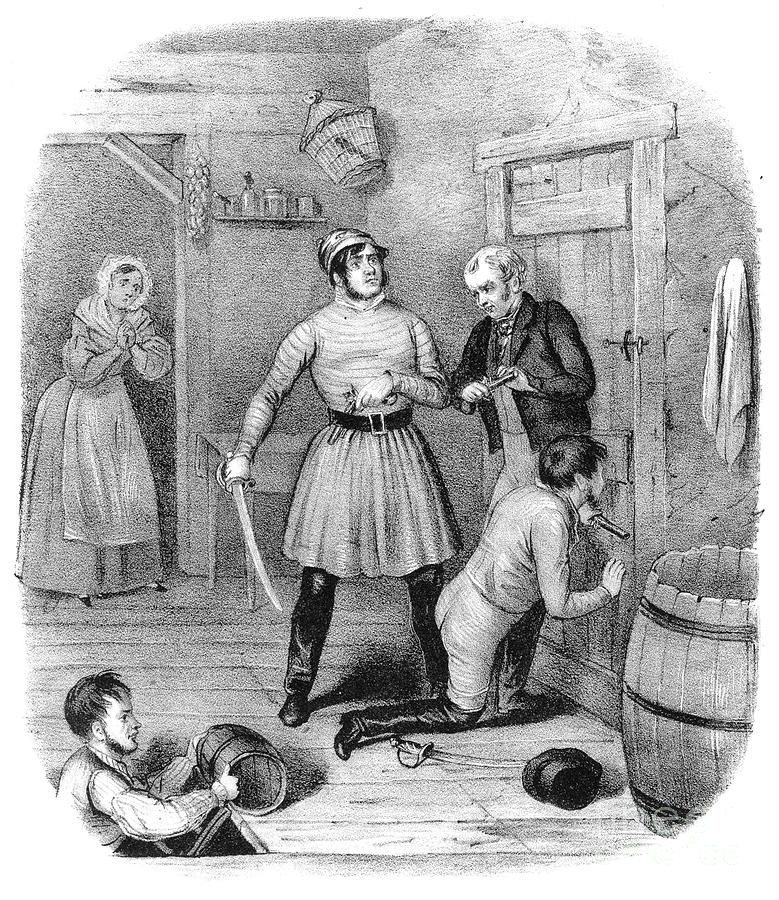Through films, books, and even music, the life of smugglers has often been glamorised to be mysterious and a desirable trade, but the truth is, it was far from that.
Smuggling was an incredibly dangerous profession – if you can call it that – and the authorities were desperate to stop because it usually meant fewer taxes in the government’s purse.
From the impact of the Napoleonic Wars to the repeal of the Corn Laws, this blog will detail the inevitable downfall of the era of smuggling, looking at how smuggling has changed between then and now.
History of smuggling and its peak
Smuggling in Britain gained momentum in response to high tariffs on everyday goods, such as sugar and tea. From the 13th century onward, wool exporters, particularly in Sussex and Kent, smuggled across the Channel to avoid customs duties. This activity paved the way for the entire smuggling network several hundred years later. By the 18th century, heavy taxes on tea, tobacco, spirits and lace made smuggling an immensely profitable endeavour.
The Napoleonic Wars (circa 1803–1815) marked a turning point. As the Royal Navy focused on blockades and wartime operations, customs enforcement across the coast weakened. Meanwhile, wartime taxes soared, offering enormous margins for smugglers. Smuggling became a thriving underground economy, particularly along the South Coast in places like Hastings, Cornwall and Sussex. Smuggler gangs such as the notorious Hawkhurst Gang managed vast operations using tunnels, secret bays and fierce oaths of secrecy.

When did smuggling begin to decline?
Although illicit trade persists to this day, the decline began in the early‑to‑mid-19th century, with the most significant drop occurring in the 1830s and 1840s. By around 1838,1840, major confrontations had waned, and the economics turned against smugglers as legal pricing improved, and enforcement stiffened once again.
Why did smuggling come to an end?
There were multiple factors at play to kick off the smuggling trade, so it’s only natural that multiple factors contribute to its downfall. Here are just a few of them…
Reduction in import duties and taxes
In the 1840s, under leaders like Sir Robert Peel, import duties on staple items, tea, tobacco, and various manufactured goods, were slashed. This eroded smuggling profitability almost overnight; legally imported goods became cheaper than smugglers’ offerings.
Improved law enforcement
At the close of the Napoleonic Wars, the Royal Navy and army were freed up to assist with domestic coastal policing. The establishment of a formal coast‑blockade armed with skilled naval personnel made smuggling riskier than it was during the Napoleonic Wars. Smuggler vessels were intercepted and confiscated with greater efficiency. In Hastings and Sussex, the number of recorded violent encounters declined sharply after 1833–38, showing a rapid decline.
Introduction of the Corn Laws
Although the Corn Laws originally regulated grain imports between 1815 and 1846 to keep prices high and protect landowners, the repeal in 1846‑48 swept away tariffs on hundreds of goods. The mass removal of duties on around 450 items symbolised Britain’s decisive shift to free trade, and it eliminated many of the economic incentives that had fuelled smuggling.
Harsher punishments
Smugglers had long risked heavy fines, lengthy imprisonment, or even death. Earlier in the 18th century, violent confrontations like the 1784 Battle of Mudeford had ended in executions of smugglers. As enforcement tightened in the 19th century, sentences became more routinely enforced, dissuading new recruits and pushing others out of the trade.
Hastings: From smuggling base to tourist attraction
Hastings was ideally suited to smuggling: its proximity to France (roughly 45 miles), rugged cliffs, hidden coves and maritime culture created excellent conditions for landing contraband goods like brandy, tobacco and lace. Smugglers used caves, such as St. Clements Caves, and inland tunnels to conceal goods. Today, these caves form the heart of the Smugglers Adventure.
As smuggling faded by the 1840s, Hastings gradually shifted identity from covert trade route to seaside town, preserving its illicit past through museums, guided walks and exhibitions.
Learn more about the history of smuggling at Smugglers Adventure
At Smugglers Adventure in Hastings, you can explore St Clements Caves and interactive exhibits on the history of smuggling in Hastings. Discover how smugglers worked: from tunnels and watch parties to hidden coves. Their stories are brought to life through guided tours and recreated scenes.
Smuggling hasn’t vanished entirely, but it ceased to matter as an organised trade. Today, Hastings celebrates that storied past, inviting visitors to walk through history and glimpse the hidden world of those who once risked it all.
